
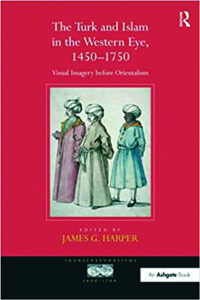
The Turk and Islam in the Western Eye (1450–1750)
James G. Harper
Ashgate Publishing (2011)
Unprecedented in its range - extending from Venice to the New World and from the Holy Roman Empire to the Ottoman Empire - this collection probes the place that the Ottoman Turks occupied in the Western imaginaire, and the ways in which this occupation expressed itself in the visual arts. Individual essays in this volume examine specific images or groups of images, problematizing the ‘truths’ they present and analyzing the contexts that shape the presentation of Ottoman or Islamic subject matter in European art. The contributors trace the transmission of early modern images and representations across national boundaries and across centuries to show how, through processes of translation that often involved multiple stages, the figure of the Turk (and by extension that of the Muslim) underwent a multiplicity of interpretations that reflect and reveal Western needs, anxieties and agendas. The essays reveal how anachronisms and inaccuracies mingled with careful detail to produce a “Turk,” a figure which became a presence to reckon with in painting, sculpture, tapestry and printmaking.
James G. Harper (Ph.D., University of Pennsylvania) is Associate Professor of Renaissance and Baroque Art at the University of Oregon and a fellow of Villa I Tatti, the Harvard University Center for Italian Renaissance Studies.
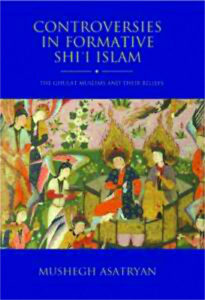
Controversies in Formative Shi’i Islam: The Ghulat Muslims and Their Beliefs
Mushegh Asatryan
I.B. Tauris (2016)
Among the various Muslim communities that were articulating their doctrinal positions in the early Islamic centuries, one in particular was known derisively as the Ghulat (‘extremists’). This was owing to their specific interpretation of Islam, which included an ‘extreme’ devotion to the Shi?i Imams and the family of the Prophet, and controversial religious ideas, such as the transmigration of souls into other human or sub-human forms. Widely active in Iraq in the 8th and 9th centuries, the Ghulat developed a complex worldview and produced a rich religious literature. Until now, understanding of this community has mainly relied on sources produced outside of the group, which are inaccurate or polemical in nature. This book looks at newly recovered primary texts in order to study the Ghulat first hand. Mushegh Asatryan examines the development of the Ghulat writings, situating the community within a broader historical context and offering a comprehensive survey of their distinctive cosmology. Through his detailed analysis, the book offers insight into the formation of one of the earliest religious traditions in Islamic history as well as the nature of the community in which texts were produced and circulated.
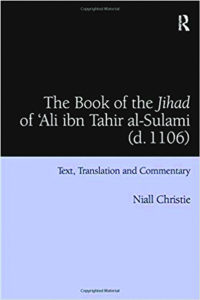
The Book of the Jihad of ‘Ali ibn Tahir al-Sulami (d. 1106)
Routledge (2015)
Niall Christie
In 1105, six years after the first crusaders from Europe conquered Jerusalem, a Damascene Muslim jurisprudent named ’Ali ibn Tahir al-Sulami (d. 1106) publicly dictated an extended call to the military jihad (holy war) against the European invaders. Entitled Kitab al-Jihad (The Book of the Jihad), al-Sulami’s work both summoned his Muslim brethren to the jihad and instructed them in the manner in which it ought to be conducted, covering topics as diverse as who should fight and be fought, treatment of prisoners and plunder, and the need for participants to fight their own inner sinfulness before turning their efforts against the enemy. Al-Sulami’s text is vital for a complete understanding of the Muslim reaction to the crusades, providing the reader with the first contemporary record of Muslim preaching against the crusaders. However, until recently only a small part of the text has been studied by modern scholars, as it has remained for the most part an unedited manuscript. In this book Niall Christie provides a complete edition and the first full English translation of the extant sections (parts 2, 8, 9 and 12) of the manuscript of al-Sulami’s work, making it fully available to modern readers for the first time. These are accompanied by an introductory study exploring the techniques that the author uses to motivate his audience, the precedents that influenced his work, and possible directions for future study of the text. In addition, an appendix provides translations of jihad sermons by Ibn Nubata al-Fariqi (d. 985), a preacher from Asia Minor whose rhetorical style was highly influential in the development of al-Sulami’s work.
Niall Christie received his PhD in Islamic History from the University of St Andrews, Scotland, in 2000. He teaches the history of Europe and the Middle East at Langara College in Vancouver, Canada.
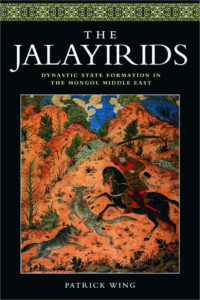
The Jalayirids: Dynastic State Formation in the Mongol Middle East
Patrick Wing
Edinburgh University Press (2016)
This book traces the origins, history, and memory of the Jalayirid dynasty, a family that succeeded the Mongol Ilkhans in Iran and Iraq in the 14thand early 15thcenturies. The story of how the Jalayirids came to power is illustrative of the political dynamics that shaped much of the Mongol and post-Mongol period in the Middle East. The Jalayirid sultans sought to preserve the social and political order of the Ilkhanate, while claiming that they were the rightful heirs to the rulership of that order. Central to the Jalayirids’ claims to the legacy of the Ilkhanate was their attempt to control the Ilkhanid heartland of Azarbayjan and its major city, Tabriz. Control of Azarbayjan meant control of a network of long-distance trade between China and the Latin West, which continued to be a source of economic prosperity through the 8th/14thcentury. Azarbayjan also represented the center of Ilkhanid court life, whether in the migration of the mobile court-camp of the ruler, or in the complexes of palatial, religious and civic buildings constructed around the city of Tabriz by members of the Ilkhanid royal family, as well as by members of the military and administrative elite.
Patrick Wing is Assistant Professor of History at the University of Redlands. His research focuses on the history of the Middle East in the period of the Mongols and their successors.
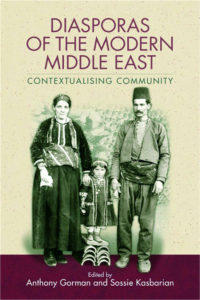
Diasporas of the Modern Middle East: Contextualising Community
Anthony Gorman, Sossie Kasbarian
Edinburgh University Press (2015)
Approaching the Middle East through the lens of Diaspora Studies, the 11 detailed case studies in this volume explore the experiences of different diasporic communities in and of the region, and look at the changing conceptions and practice of diaspora in the modern Middle East. They show howconcepts central to diaspora such as “homeland”, “host state”, “exile”, “longing”, “memory” and “return” have been deconstructed and reinstated with new meaning through each complex diasporic experience. They also examine how different groups have struggled to claim and negotiate a space forthemselves in the Middle East, and the ways in which these efforts have been aided and hampered by the historical, social, legal, political, economic, colonial and post-colonial specificities of the region.In situating these different communities within their own narratives - of conflict, resistance, war, genocide, persecution, displacement, migration - these studies stress both the common elements of diaspora but also their individual specificity in a way that challenges, complements and at timessubverts the dominant nationalist historiography of the region.
Anthony Gorman is Senior Lecturer in Islamic and Middle Eastern Studies at the University of Edinburgh. He has taught at universities in Australia, Egypt and Britain. Among his research interests are modern Egyptian historiography and the resident foreign presence in modern Egypt.
Sossie Kasbarian was awarded her PhD from the School of Oriental and African Studies (SOAS). She has taught at SOAS, the Graduate Institute in Geneva, and the University of Edinburgh. She is currently Lecturer in Middle East Politics at the University of Lancaster. Sossie is co-editor of the special issue of Patterns of Prejudice entitled Civil Society rapprochement and high politics stalemate: Mapping the future of Armenian-Turkish relations in the context of the wider Middle East (with Kerem Oktem, 2014), as well as a number of articles in the field of Diaspora Studies.

